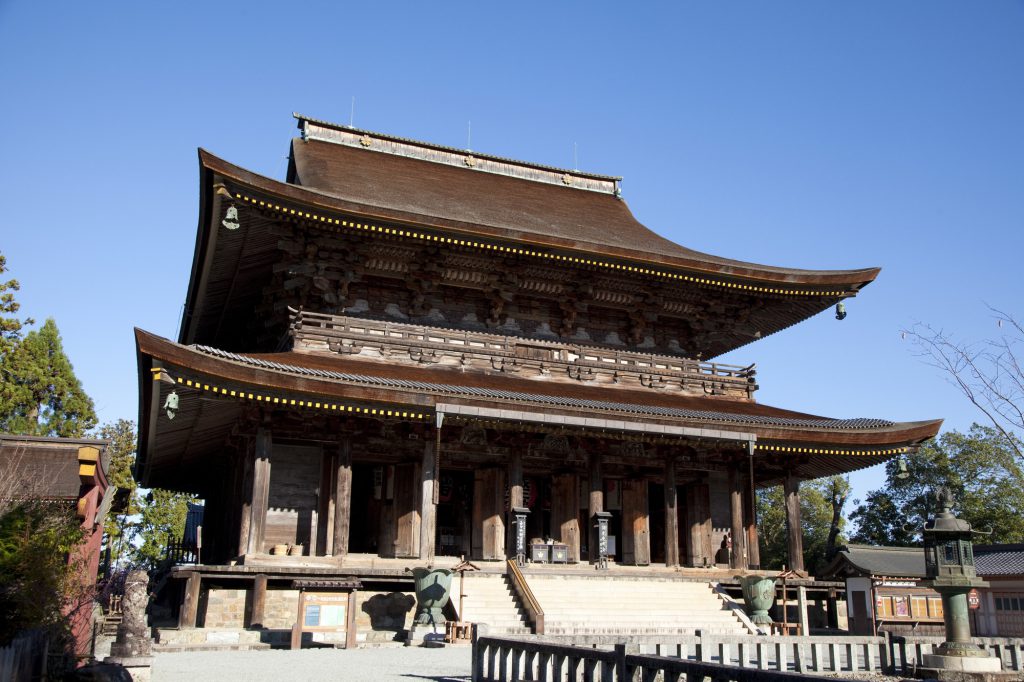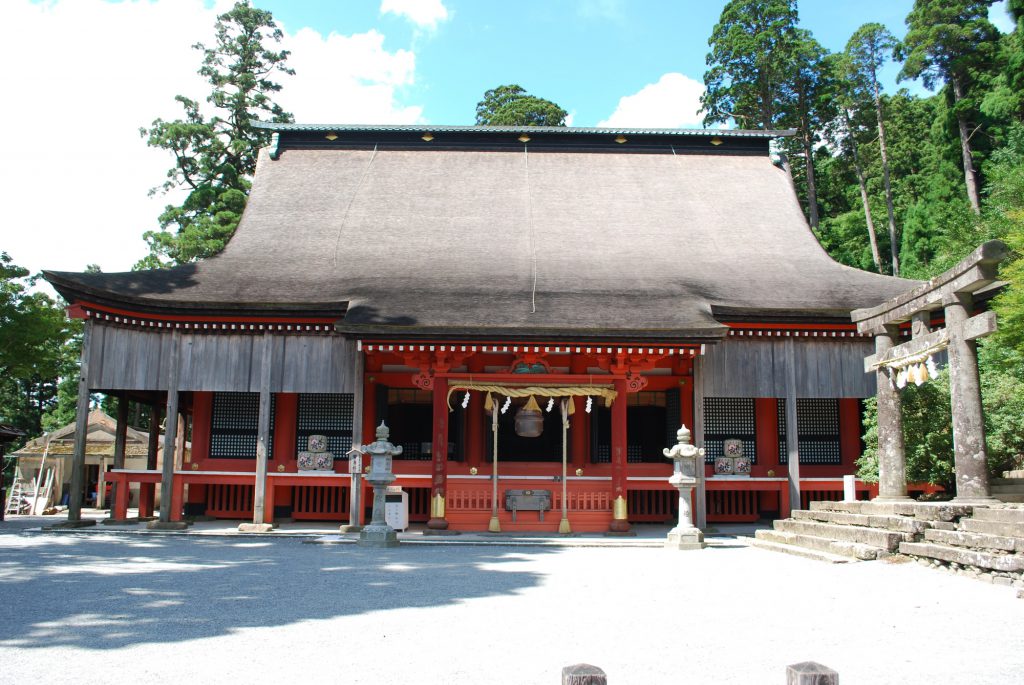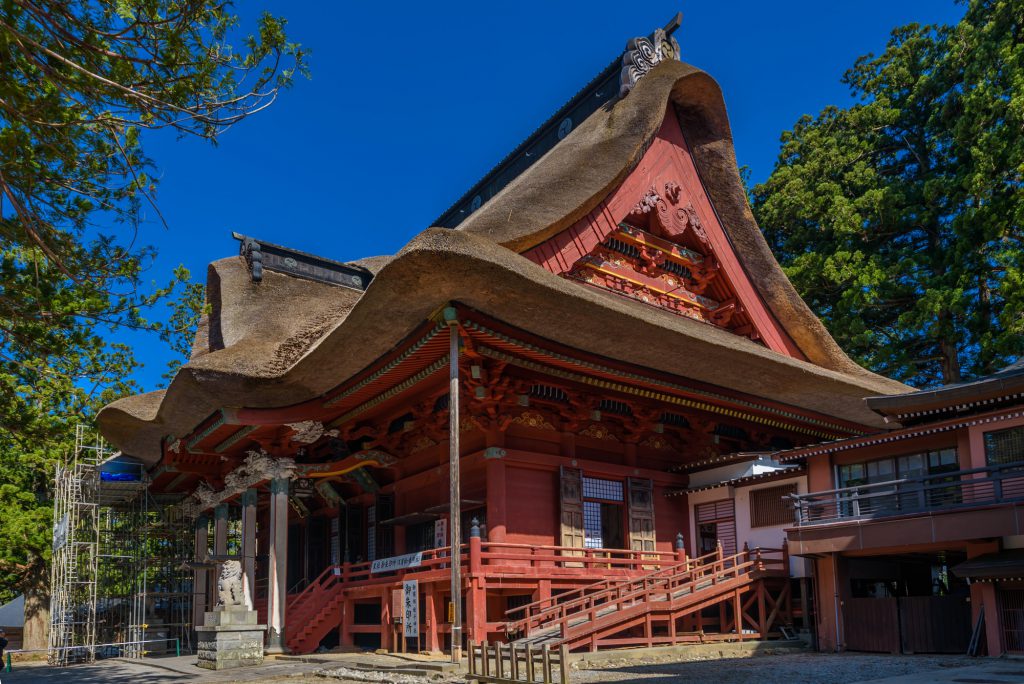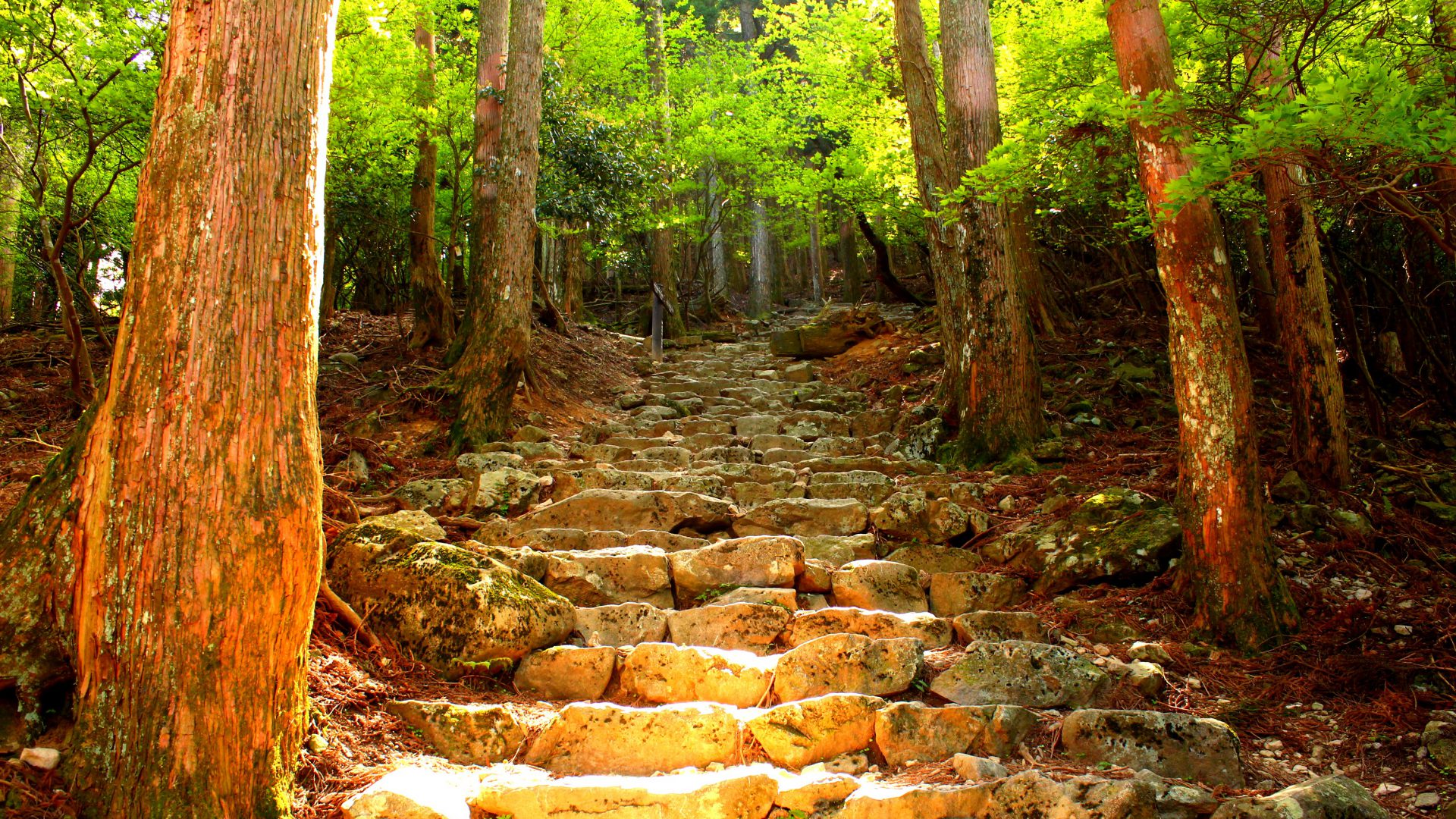Holy mountain where they practice was located throughout Japan. Among them, “Ominesan mountain” (Nara Prefecture), “Hagurosan” (Yamagata Prefecture) is a representative Shugen-dojo with a long history. Together “Hikosan mountain” (Fukuoka prefecture) when before Meiji period and these two dojos are called The three major Shugen-dojo. These are important places for the Shugen-do. We will introduce representative shrines and temple in these mountains.
Kinpusenji Temple

- Address
- 2498 Yoshinoyama, Yoshino-machi, Yoshino-gun, Nara Prefecture
- Admission
- 500 yen (Special Period 1,000 yen)
- Opening Time
- 8:30 – 16:30
- Access
- Transfer to Ropeway at Yoshino Station on Kintetsu Yoshino Line. Get off at the Ropeway Yoshinoyama station. Walk about 10 minutes.
- Official Web Site
- http://www.kinpusen.or.jp/
Located in the middle of Yoshino-san mountain in Nara Prefecture, This place is the most famous place of cherry blossoms in Japan, Kinpusenji temple is a major temple in the Yoshino area. This temple has a history of 1300 years. It is also one of the typical temples of the Shugen-do. What is noteworthy in this temple is a main hall with a rigorous atmosphere called “ZAOH-DO” (national treasure). It is said that “ZAOU-DO” is the second largest old wooden building in Japan. The height is 34 meters. Three very large blue statues are placed in “ZAOH-DO”. These are the statues of “ZAOHGONGEN”. “ZAOHGONGEN” is the principal image (of Buddha) of representative for the Shugen-do. It is said that this Buddha was felt as a result of “En no Oduno(En no Gyoja)” hard training. These three statues were rested 1300 years ago, and the height is 7 meters. In 2004 the “Sacred Sites and Pilgrimage Routes in the Kii Mountain Range” including the Kinpusenji Temple was registered as UNESCO World Cultural Heritage.
Hikosan Jingu Shrine

- Address
- 1 Hikosan, Soeda-machi, Tagawa-gun, Fukuoka Prefecture
- Admission
- Free
- Opening Time
- 9:00 – 17:00
- Access
- Transfer to Soeda-machi bus at Soeda station of JR Kyushu Hitahikosan line. Bus to the bus stop “Dou no Torii” at Soeda-machi bus.
- Official Web Site
- http://hikosanjingu.or.jp/
Hikosan Jingu Shrine at the top of the mountain in Kitakyushu area boasts a wonderful history and scenery. Hikosan mountain is the holy mountain that was believed as a mountain of KAMI since ancient times. And this mountain was a very important place for the Shugen-do Historically. However, unfortunately, the Shugen-do was abolished by distinguish Shinto and Buddhism during the Meiji Era. There are two small museums in Hikossan mountain. Here are valuable exhibits of various Buddhist objects, costumes, documents, etc. used in the former Hikosan Shugen-do, and it is possible to remember the prosperity of the Hikossan Shugen-do of the past. From the copper gate torii which is the entrance of the shrine to “Houheiden”, you can walk on the approach path or ride the slope car. On the left and right of the approach path you can see the traces of the temple where the Shugenja once lived. There is a shrine called “JOHGU” at the summit of the mountain. Even with the shortest route it takes 4 hours for round trip and it is difficult hike, but you will be able to have a wonderful experience to enjoy nature.
Dewasanzan Shrine

- Address
- 7 Hagurro-machi Touge, Tsuruoka-si Yamagata Prefecture
- Admission
- Free
- Access
- Transfer to Shonai Kotsu Bus to Haguro-yama at JR East Uetsu-Honsen Line. Get off at the terminal.
In case of climbing the stone steps get off at Haguro Zuishinmon. - Official Web Site
- http://www.dewasanzan.jp/
“Dewasanzan” is a generic term for Hagurosan mountain, Gassan mountain and Yudonosan mountain. “Dewasanzan Jinja Shrine” is at the top of Hagurosan mountain. Although you can go by the bus to the summit of the mountain, we recommend walking up the stone steps with 2246 steps to the summit through the cedar tree. Thirty-three paintings are engraved on the stone steps, and it is said that good luck comes when you find all of them. On the way to the summit there are five-storied pagoda (national treasure) built in 937 and cedar over 1,000 years old. During this hike, there is also the possibility of meeting the Shugenja during pilgrimage if luck is good. In “Dewasanzan” you can learn about the Shugen-do which is a folk religion based on Japan’s original mountain worship which blended Buddhism and Shinto tradition. The Shugenja is called Yamabushi and transcends the physical world to serve people. Hagurosan mountain is a beautiful place and it is a very important place for the Shugenja. If you are interested in Buddhism and Shinto traditions and wonderful scenery it is a worthy place to go. Also, at the Cultural Memorial Hall there are exhibits on the Shugen-do, Shugenja (Yamabushi), “Dewasanzan”, which is also worth seeing.

